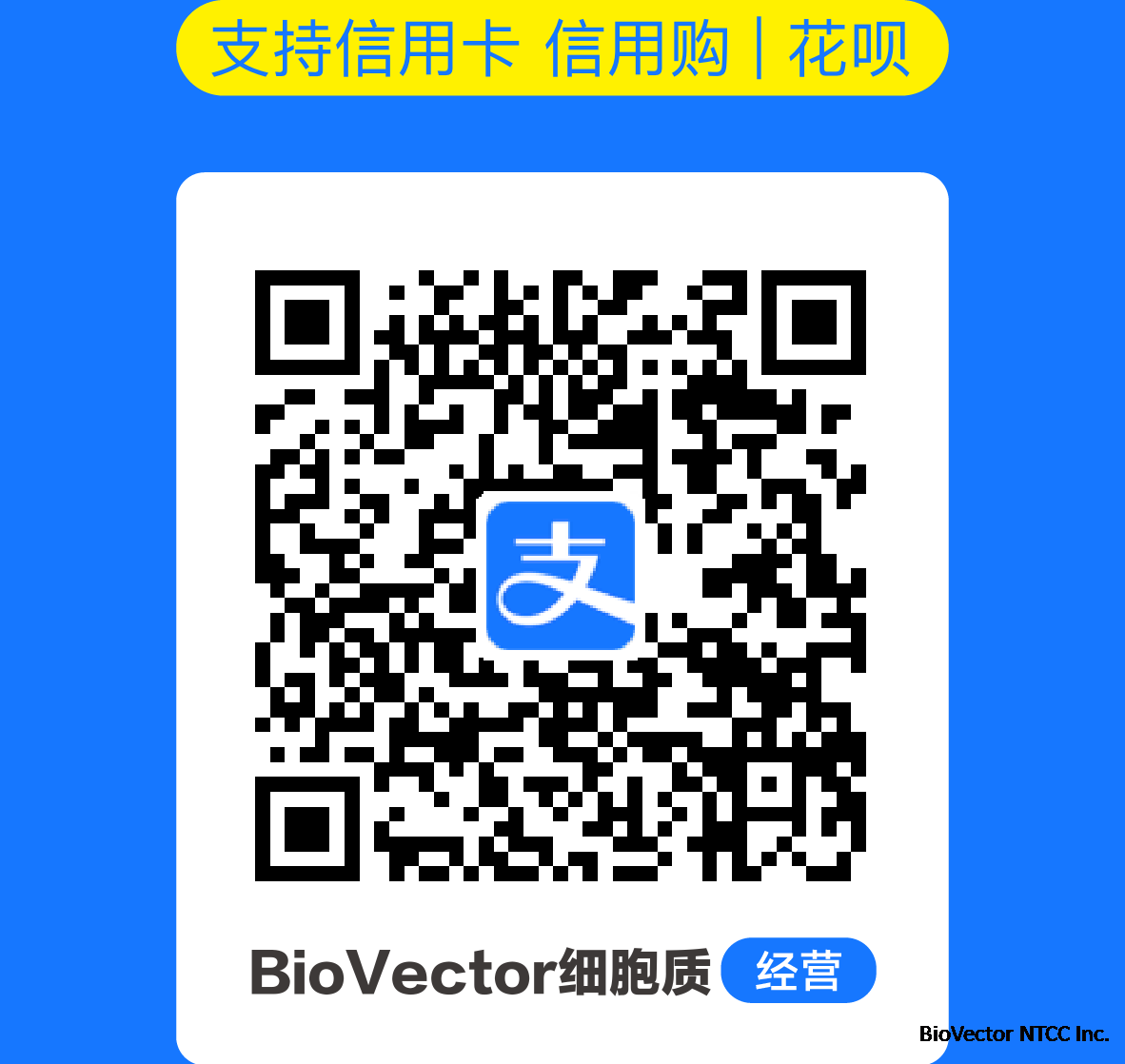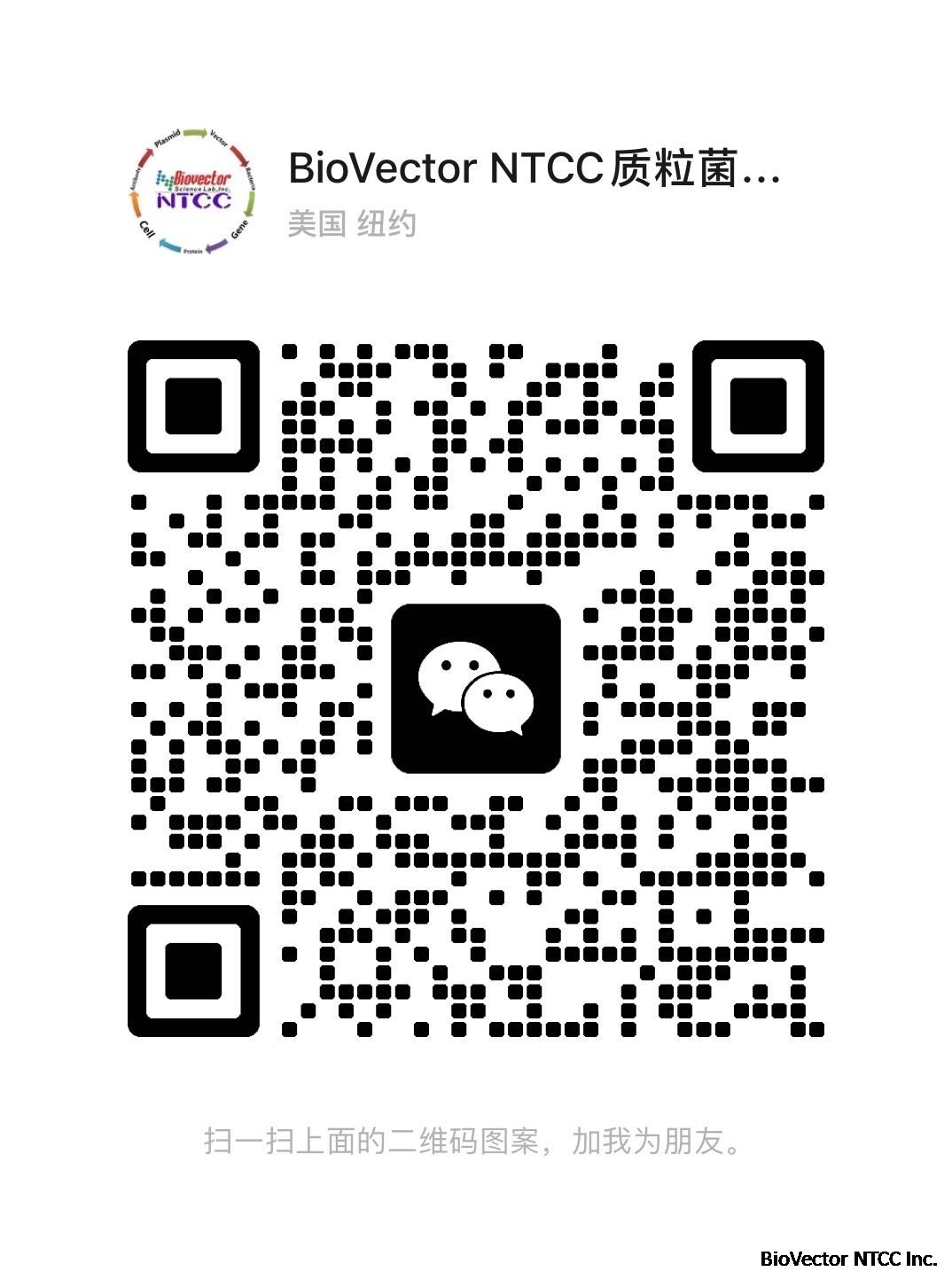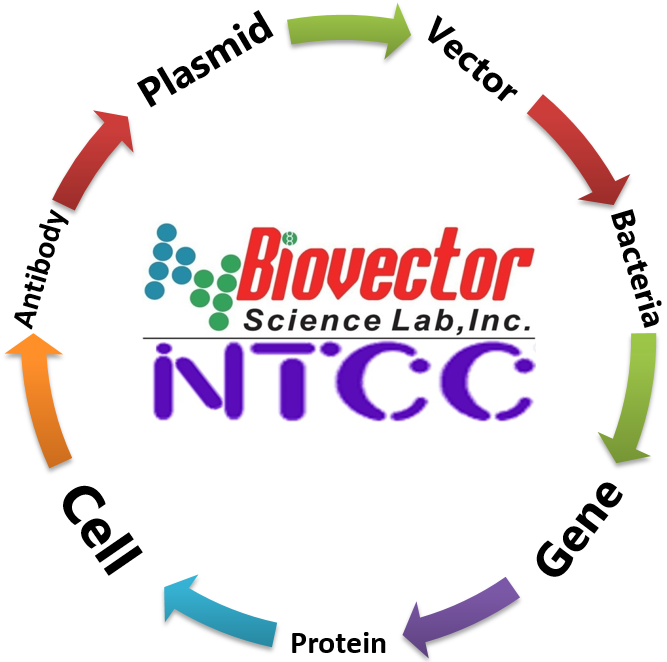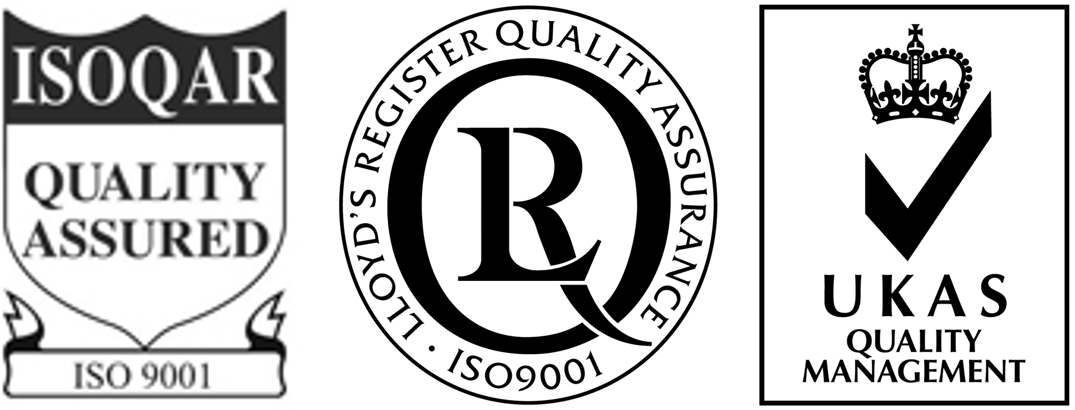Lenti-X 293T Cell Line 慢病毒包装细胞株-BioVector NTCC质粒载体菌种细胞蛋白抗体基因保藏中心
- 价 格:¥25607
- 货 号:Lenti-X 293T Cell Line 慢病毒包装细胞株
- 产 地:北京
- BioVector NTCC典型培养物保藏中心
- 联系人:Dr.Xu, Biovector NTCC Inc.
电话:400-800-2947 工作QQ:1843439339 (微信同号)
邮件:Biovector@163.com
手机:18901268599
地址:北京
- 已注册
Lenti-X 293T Cell Line
慢病毒包装细胞株
Cat No.: 632180
The Lenti-X 293T Cell Line is a subclone ofthe transformed human embryonic kidney cell line, HEK 293, which is highlytransfectable and supports high levels of viral protein expression (1). Whentransfected with the Lenti-X HTX Packaging System and a lentiviral vector,these cells are capable of producing lentiviral titers as high as >108ifu/ml, as determined by flow cytometry. The cell line also constitutivelyexpresses the simian virus 40 (SV40) large T antigen.
Package Contents
• 1 Flask Lenti-X 293T Cell Line (1.0~3.0 x 106 cells/Flask)
Storage Conditions
Store at 37oC
Shipping Conditions
RT
Product Documents
The following documents apply to thisproduct:
• Lenti-X 293T Cell Line Protocol-at-a-Glance
Cell Type Information
The Lenti-X 293T Cell Line is a humanembryonic kidney (HEK) cell line, transformed with adenovirus type 5 DNA, thatalso expresses the SV40 large T antigen. The cell line was subcloned for hightransfectability and high-titer virus production.
Recommended Cell Culture Medium
90% Dulbecco’s Modified Eagle’s Medium(DMEM) with high glucose (4.5 g/L), 4 mM L-glutamine, and sodium bicarbonate(Sigma-Aldrich, D5796); 10% Fetal Bovine Serum (FBS); 100 units/ml penicillin Gsodium, and 100 μg/ml streptomycin sulfate. Add 1 mM sodium pyruvate(Sigma-Aldrich, S8636).
The flask was seeded with cells, grown, andcompletely filled with medium to prevent loss of cells during shipping.
1. Upon receipt, visually examine theculture for macroscopic evidence of any microbial contamination. Using aninverted microscope (preferably equipped with phase-contrast optics), carefullycheck for any evidence of microbial contamination. Also, check to determine ifthe majority of cells are still attached to the bottom of the flask; duringshipping the cultures are sometimes handled roughly and many of the cells oftendetach and become suspended in the culture medium (but are still viable).
2. If the cells are still attached,aseptically remove all but 5 to 10 mL of the shipping medium. The shippingmedium can be saved for reuse. Incubate the cells at 37°C in a 5% CO2 in airatmosphere until they are ready to be subcultured.
3. If the cells are not attached,aseptically remove the entire contents of the flask and centrifuge at 125 x gfor 5 to 10 minutes. Remove shipping medium and save. Resuspend the pelletedcells in 10mL of this medium and add to 25 cm2 flask. Incubate at 37°C in a 5%CO2 in air atmosphere until cells are ready to be subcultured.
To insure the highest level of viability,thaw the vial and initiate the culture as soon as possible upon receipt. Ifupon arrival, continued storage of the frozen culture is necessary, it shouldbe stored in liquid nitrogen vapor phase and not at 70°C. Storage at 70°C willresult in loss of viability.
1. Thaw the vial by gentle agitation in a37°C water bath. To reduce the possibility of contamination, keep the Oring andcap out of the water. Thawing should be rapid (approximately 2 minutes).
2. Remove the vial from the water bath assoon as the contents are thawed, and decontaminate by dipping in or sprayingwith 70% ethanol. All of the operations from this point on should be carriedout under strict aseptic conditions.
3. Transfer the vial contents to acentrifuge tube containing 9.0 mL complete culture medium and spin atapproximately 125 x g for 5 to 10 minutes.
4. Resuspend cell pellet with therecommended complete medium (see the specific batch information for the culturerecommended dilution ratio) and dispense into a 25 cm2 or a 75 cm2 cultureflask. It is important to avoid excessive alkalinity of the medium duringrecovery of the cells. It is suggested that, prior to the addition of the vialcontents, the culture vessel containing the complete growth medium be placedinto the incubator for at least 15 minutes to allow the medium to reach itsnormal pH (7.0 to 7.6).
5. Incubate the culture at 37°C in asuitable incubator. A 5% CO2 in air atmosphere is recommended if using themedium described on this product.
Volumes used in this protocol are for 1875px2 flasks; proportionally reduce or increase amount of dissociation medium forculture vessels of other sizes.
1. Remove and discard culture medium.
2. Briefly rinse the cell layer with 0.25%(w/v) Trypsin0.53 mM EDTA solution to remove all traces of serum which containstrypsin inhibitor.
3. Add 2.0 to 3.0 mL of Trypsin EDTAsolution to flask and observe cells under an inverted microscope until celllayer is dispersed (usually within 5 to 15 minutes).
Note: To avoid clumping do not agitate thecells by hitting or shaking the flask while waiting for the cells to detach.Cells that are difficult to detach may be placed at 37°C to facilitatedispersal.
4. Add 6.0 to 8.0 mL of complete growthmedium and aspirate cells by gently pipetting.
5. Add appropriate aliquots of the cellsuspension to new culture vessels.
6. Incubate cultures at 37°C.
Subcultivation ratio: A subcultivationratio of 1:4 is recommended. Medium renewal: Every 2 to 3 days.
Appropriate safety procedures should alwaysbe used with this material. Laboratory safety is discussed in the currentpublication of the Biosafety in Microbiological and Biomedical Laboratoriesfrom the U.S. Department of Health and Human Services Centers for DiseaseControl and Prevention and National Institutes for Health.
Notes:
We recommend that cultures be initiated assoon as possible after receipt. For HEK 293-based cell lines, we recommendusing collagen-coated plates or flasks for culturing for efficient recovery offrozen stocks. Culture vessels coated with compounds other than collagen mayalso provide suitable growth substrates for HEK 293-based cell lines; however,only collagen-coated plates (e. g. BD Falcon BIOCOAT Collagen I cellware) havebeen tested at Clontech. The cells may be cultured on regular flasks/dishes(e.g. noncoated flasks/dishes) after recovery; however, if adherence is poor,we recommend collagen-coated vessels for all culturing purposes. Completeattachment of newly thawed HEK 293-based cultures may require up to 48 hrs.
References
1. Pear, W.S., et al. (1993) Proc. Natl.Acad. Sci. USA 90(12):8392–8396.
Quality Control Data
Mycoplasma Contamination Test
This lot of cells has been tested and foundto be free of Mycoplasma contamination.
- 公告/新闻




